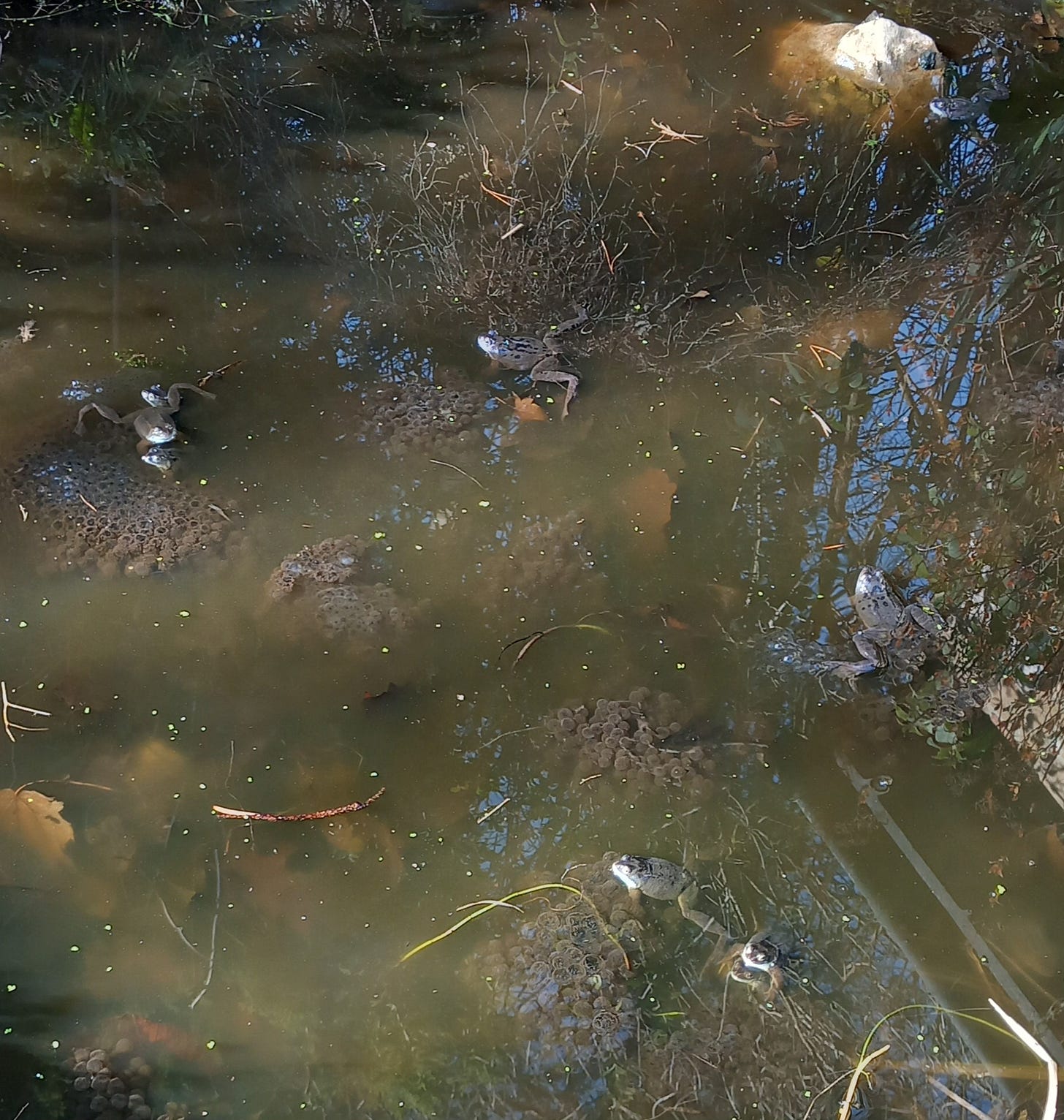Let me proudly present……the class of 2025.
Well, what can I say? So many frogs…so much frogspawn, and I am thrilled! The frogs are not shy anymore, rushing into the deep every time they sense the slightest movement close-by. They croak the night and day away, and do the very best breast stroke kicks that any Olympian swimmer would be proud to own. I would love to be able to tell you just how much frogspawn they have delivered so far but it is impossible to say.
How much?
According to the Woodland Trust (www.woodlandtrust.org.uk) each clump of frogspawn can contain two thousand eggs. So, let’s do the maths:
27 clumps x 2000 eggs per clump = 54,000 eggs
1 in 50 will reach maturity
1, 080 baby frogs potentially will be able to leave the pond.
That’s still a lot of frogs I hear you say. Yes it is and it is a delight when, in the summer months, you spot your first, fully formed, tiny baby frog. But in truth there are many dangers out there for these little creatures. Birds like crows, owls, herons, mammals like foxes and even cats have been known to take them. In short, they are not safe at any stage of their life. With frog numbers declining, due to habitat loss, I am glad I have created a place to give them a chance. As you can see, they have taken me up on my offer.
The frogs have moved out of the pond now. Their eggs will be around for three weeks or so before I will see signs that the tadpole stage has started. Watch this space for when this happens. I will be delighted to share it with you.
I am curious:
Did you ever watch tadpoles at school, on the nature table?
If so, what were your thoughts?





Mine seem to leg-it back to the undergrowth and shady parts of the garden. I do see them in the pond in the summer when it is hot.
Frogs! Where do the mature frogs go after they have laid their eggs? I thought they'd stay, a while at least. Do you have other frogitat?